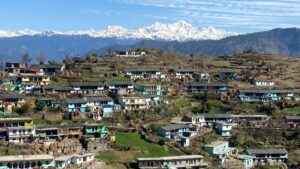A Report on Real Estate Financing in Nepal
Introduction:
This study aims at analyzing banking sector’s exposures to real estate financing. The specific objectives are to measure and classify the actual real estate financing undertaken by banks and financial institutions in Kathmandu Valley; to identify the real estate financing procedure by banks and financial institutions; and to assess the impact of policy changes on real estate financing in Nepal.
This study has collected information from three different parties of the real estate sector;
first, the banks and financial institutions (Group A);
second, professional real estate developers (Group B);
third, individual buyers of real estate assets (Group C).
Real Estate Sector:
Housing provides shelter. As it is a basic need of every human being, it provides security, pride and ownership. It has great significance in human life. Real estate is a legal term that encompasses land along with improvements to the land, such as buildings, fences, walls and other site improvements that are fixed in location–immovable. Real estate is often considered synonymous with real property (also sometimes called realty), and housing is one component of real estate. Real estate covers both commercial and personal properties.

Real Estate Financing:
McKinney, Jr. (1952) has identified four sources of real estate financing (in the order of contribution) during the housing boom in the United States, such as savings and loan associations followed by commercial banks, insurance companies, and mutual savings banks. Edwards, (1964) has also pointed out that savings and loan associations continued to grow more rapidly than other mortgage lenders. They cited the use of these institutions as the dominant force in the home mortgage markets. In spite of an increasing focus on urban housing and development, informal systems are still the dominant producers in many developing countries.
Real Estate Financing in Some South Asian Countries:
Real estate sector is a large, huge diversified sector, one with many verticals such as land, design, construction, development, investment and lending, among others. Real estate development is taking place in residential, retail, office, hotels and industrial sectors. In recent years, real estate markets have grown dramatically. However, real estate financing could not follow the sustainable path over the years. There are various economic and non-economic factors behind this. These factors may vary as per the real estate sector and economic condition of the country.
Policies and Institutional Arrangement for Real Estate Financing:
The Government of Nepal has given certain priority for urban development and housing program in Kathmandu Valley through its various plans and programs. The Three Year Plan has set clear objectives, strategies and policies for housing and urban development, the most relevant ones being the following:
• Implementation of national building code will be made obligatory.
• Technicians will be produced in order to construct qualitative, less costly and safe buildings.
• Updated and effective regulatory provisions for the construction of multistorey building in the urban areas will be made.
• Satellite cities will be developed around the capital city.
NRB’s Regulation on Real Estate Financing:
The financial and economic instability that followed the plunge in asset prices prompted central banks to revisit their policy responses. Central bankers generally have two options when faced with a surge in asset prices: they can either be proactive or reactive. To be proactive would be to lean against the wind, that is, to tighten monetary policy during the boom phase. The reactive policy would be to mitigate the consequences of an expected or an actual asset price bust.
Economic Contribution of Real Estate Sector:
Nepal is considered as a remittance based economy. Millions of Nepalese youths are going overseas for employment. They are sending significant amount of remittances for the livelihood of their families and relatives in the country. The ratio of workers’ remittance to GDP has been about 20.0 percent, on average during the last three years. It is remarkable that such a big amount is coming from a single sector and most of it is spent on imported goods and real estate purchases.
Conclusion:
As the housing and real estate sector plays an important role in employment generation and economic growth in the economy, it has been receiving priority. Banks and financial institutions have been finding it as an emerging sector and have been providing necessary financing. If BFIs fail to prevent risks associated with these loans, relax lending criteria, and grant more individual mortgage and housing development loans, then real estate bubbles may appear.
Also Read: Affordable Housing in Bangladesh
